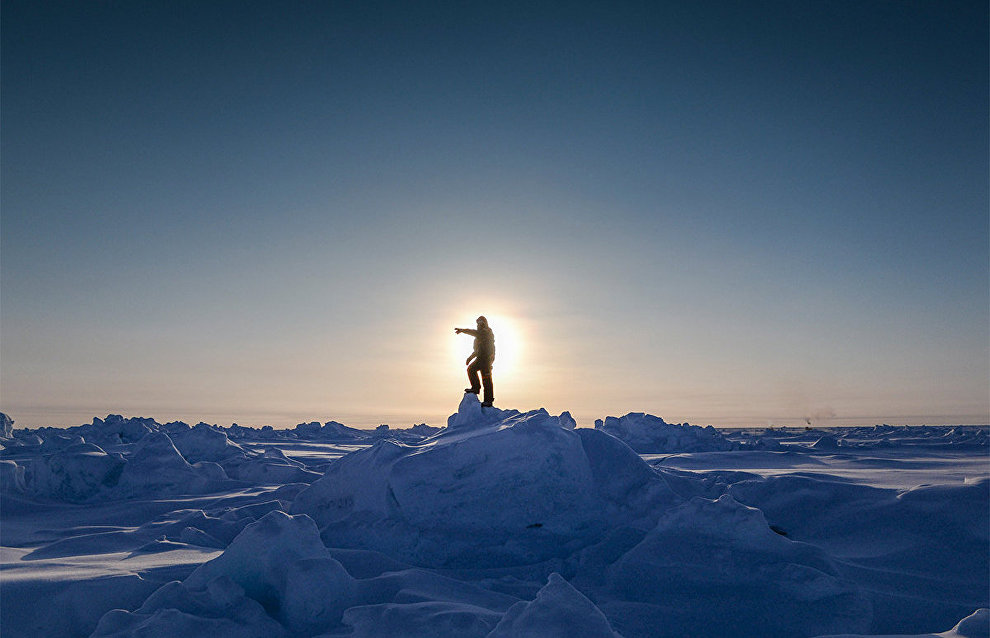Three views on Arctic development
What is the ideal Arctic?
Professor Alexander Pilyasov, Director of the Center of the Economy of the North and the Arctic at the Council for the Study of Productive Forces, was the first to deliver a lecture in which he described his vision of an ideal Arctic.
"What is the ideal Arctic? It should have as many resources as in the Russian Arctic, the same infrastructure as in the Scandinavian Arctic, the distribution of resource rent as in Alaska (half remains in it), the development of national business as in Canada, and the feeling of one's ‘own land' as in Greenland. But this will never be the case," Pilyasov said. The professor initially studied the ethnic layout of the region but later decided it would be more rational to look at it in terms of continents. As a result, he divided the Arctic into sectors for Europe, America and Asia. According to Pilyasov, the Arctic of Europe has the biggest GDP, population and the number of countries; the Arctic of America has the largest area, and the Arctic of Asia has the sharpest contrasts. He explained that the latter is due to the gap between the biggest and smallest per capita GDP in the regions and the difference in the per capita income of their populations.
"Looking at the picture from the continents, we are discovering something new about the Arctic and find new features that we did not see inside Arctic countries," Pilyasov said.
He mentioned three scenarios in Arctic development from the position of the continents — a hydrocarbon boom, "green" transformation and political confrontation. He first explained in short what the Arctic of Asia stands to gain — China will become actively involved in Kara Sea projects, the region will sign partnership contracts with global companies and start consolidating Asian Arctic ports. The "green transformation" will primarily benefit the Arctic of Europe. This is due to the development of fishing and aquiculture on the backdrop of the aggravation of global warming and, hence, the increasing tourist flow. The political confrontation scenario implies China's advance as the country is eager to "turn our Arctic" into its resource colony.
Northern Sea Route won't make it
The next lecturer, Professor Vyacheslav Baburin, Head of the Chair of Russia's Socio-Economic Geography at Moscow State University, emphasized that he does not see any prospects in developing the Northern Sea Route due to global warming. It is more difficult for ships to move when ice is melting quickly because the strong fragmentation of the ice increases navigational risks. At present, economic losses due to natural anomalies will continue growing.
According to Baburin's macroeconomic forecasts, changes in permafrost, expenses of mining companies and the high costs of living and working in the Arctic will play a large role in its development. He believes the Northern Sea Route's transit capacities have been miscalculated — the ice-breaking fleet was built for carrying bulk cargo whereas now bulk liquids and gas shipments have come to the fore.
Dubious advantages of Arctic location
Stepan Zemtsov, senior fellow of the Institute of Applied Economic Studies at the Russian Academy of the National Economy and Public Administration under the President of the Russian Federation and senior researcher at the laboratory of comprehensive ecological and geographical Arctic studies at the Moscow State University's Geographical Department, concluded after studying Arctic zoning that parts of the region are not linked by anything except poor weather conditions, isolation from large markets, the low density of the population, and single industry specialization.
"Territorially, the entire Arctic is only linked by the Northern Sea Route but since it is not operating, nothing makes it an integral whole," Zemtsov said. Displaying a sense of humor, he emphasized the Arctic's strong points: oil reserves (90 billion barrels with a global consumption of 30 billion barrels per year); unique geopolitical location (in terms of security); unique geo-transport position (Northern Sea Route), and unique eco-systems (requiring investment). Thus, Zemtsov's pluses proved to be ambiguous. He considers promising automatic systems for developing shelf deposits and tourism. Zemtsov noted that only foreign countries are developing new technology; alternative energy sources are becoming more expensive, and the melting of the permafrost leads to the destruction of roads and buildings in the region.
"I think the current natural and socio-economic conditions [of the Arctic] are most unfavorable and will further deteriorate in the next 50-100 years," he said.
The meeting's young participants formed two groups to discuss the information received and draft ideas and questions for their opponents. The experts took an active part in this work. Group members answered the questions of opponents and discussed relevant issues with lecturers.
